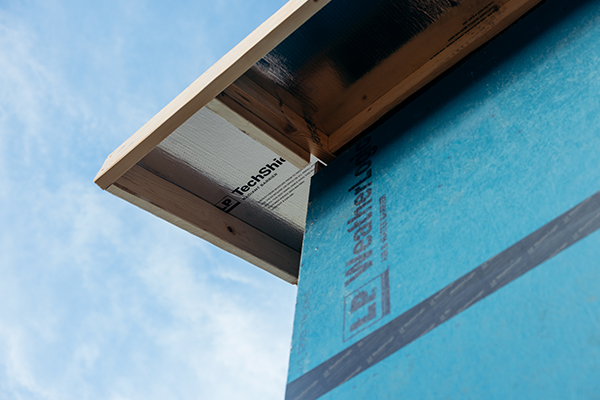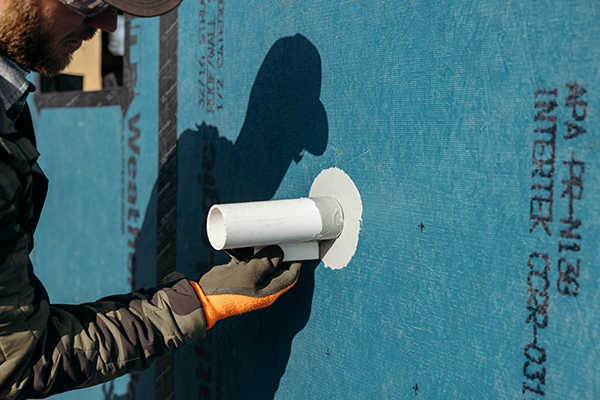Industry Trends8 min
How to Build a House That Will Last for Centuries: Strategies for Builders
A home that lasts for a century is not just a place to live but a legacy that can be passed down from generation to generation. While many houses are built to last many decades, building the next "century home" requires a different approach-one that prioritizes redundancies, systems and durable materials. To help us explore what a century home is and different factors for how long a house lasts, we asked Neil Freidberg, Building Science Manager at LP, for insight.
What is a Century Home?
A century home is a house that is at least 100 years old and is still standing and in use today. These homes are considered to be historically significant and are valued for their architectural style, craftsmanship and the stories they tell.
Building a home that can withstand the test of time is a worthwhile goal for any builder. Not only does it contribute to a community's heritage, but it also means less waste, fewer resources and less impact on the environment over time.
Looking at older homes can often give you an idea of the factors that affect a home's lifespan. How can some homes last for over 100 years and some do not? For starters, pay attention to the weather conditions in that particular area-whether that's strong winds in the Plains or the Midwest, high heat in Phoenix, below-freezing temperatures in the north, or moisture-rich humidity and salt in the Carolinas and Florida.
When a build is more resilient, ideally only the most severe weather events may cause the need to rebuild. Designing a structure to take on increasing weather concerns could be key to building a house that lasts a hundred years from now.
New Approaches for Building Houses That Last a Century
It's no secret that building a home that lasts requires making wise choices, using quality materials, and incorporating effective construction methods. But what are specific approaches today's builders can take to help ensure the structure will last for another hundred years? The solution lies in building with redundancies and utilizing the right structural solutions.
In his work, Freidberg emphasizes a holistic "whole house" approach to sustainable, long-lasting construction. "Many components may individually be resilient, but when you build a home you build a system," he says. "You have to consider how the pieces work together."

A whole-house systems approach helps homeowners, architects, builders and contractors develop successful strategies for optimizing structural resiliency and long-standing comfort. This approach considers multiple built-in fail-safes that allow the home to stand up to the passage of time. It's also a different kind of approach-one that allows for malfunction, which could seem contradictory to fine homebuilding.
The Role of Redundancies in Building Century Homes
Moisture is one of the biggest threats to a thriving century-old building, so it’s important to design a backup that serves to protect from moisture in the event the first line of defense fails.
“A fail-safe approach tells us you’ve accounted for a failure—because things are going to fail,” says Freidberg.
A roof is a good example of a component that typically has a useful life of 30 or 40 years. To combat structural deterioration caused by a roof leak, Freidberg recommends going above and beyond to build redundancies into the home.
"What this means is building in a double underlayment or a double roof system that is secondary to prevent a leak," says Freidberg. "Another roof design that works well in this situation is to install baffles that channel airflow from the exterior soffit. If water does leak from the roof, it will land on this plastic or foam substance and drip down and out the soffit."
“It’s much easier to repair baffles and soffits than the ceiling that falls in your living room during a major rainstorm,” says Freidberg.
Installing a strong WRB system for walls or roofs, such as LP WeatherLogic sheathing, helps safeguard the home from water intrusion for a tighter building envelope while allowing moisture vapor to escape. LP WeatherLogic® Seam & Flashing Tape or LP WeatherLogic Seam & Flashing Sealant—or a combination of both—can be used to seal panel seams.

Freidberg listed a number of exterior home designs that, over 100 years ago, were commonly used as a second layer of protection.
"Storm doors over a regular door can help maintain the air seal, the air pressure, and even the gasket. A good external shutter-one that is built with hinges and closes over the window-helps prevent UV wear on the external parts and can protect the window during strong storms," says Freidberg. "All of these things that we used in the past can still help us today."
Choosing Durability to Impact How Long a House Will Last
Making good decisions about the products and materials used is another important step in building a century home.
Look for a long-lasting, strong product warranty as an example of the manufacturer’s commitment to durability and resiliency. For example, LP WeatherLogic Air & Water Barrier features a 30-year limited warranty. LP® TechShield® Radiant Barrier carries a 20-year limited warranty.
For more information on other products to use in your next timeless build, visit the LP Structural Solutions portfolio product page.
Continue Reading
Resiliency Solutions
5 minIntroducing LP® SmartSide® ExpertFinish® Naturals Collection™: Nature-Inspired Beauty Meets Engineered Performance
We’re excited to introduce the LP® SmartSide® ExpertFinish® Naturals Collection™, a bold new addition to our trusted line of engineered wood siding and trim that delivers the warmth and beauty of nature with the advanced protection and performance builders and homeowners expect.
Labor Solutions
5 minChoosing the Right LP® Structural Solutions Product for Your Build
When it comes to building strong, reliable, and high-performing structures, the materials you choose matter. At LP Building Solutions, we understand that every project, whether it's a single-family home or a multifamily development, requires structural components that meet your needs for strength, durability, and efficiency.
Sustainability Solutions
5 minBuilding a More Sustainable Future with LP Building Solutions
In today's world, sustainability is no longer just a buzzword, it's a blueprint for responsible living and smarter building. As the construction industry seeks ways to reduce its environmental footprint, LP Building Solutions is focused on providing innovative building materials for eco-conscious builders to help reshape what it means to build sustainably
News & Stories3 min
History of Partnership with Gary Sinise Foundation
The LP Foundation is a proud partner of the Gary Sinise Foundation, which supports wounded veterans in several ways. You can learn more about the LP Foundation here.